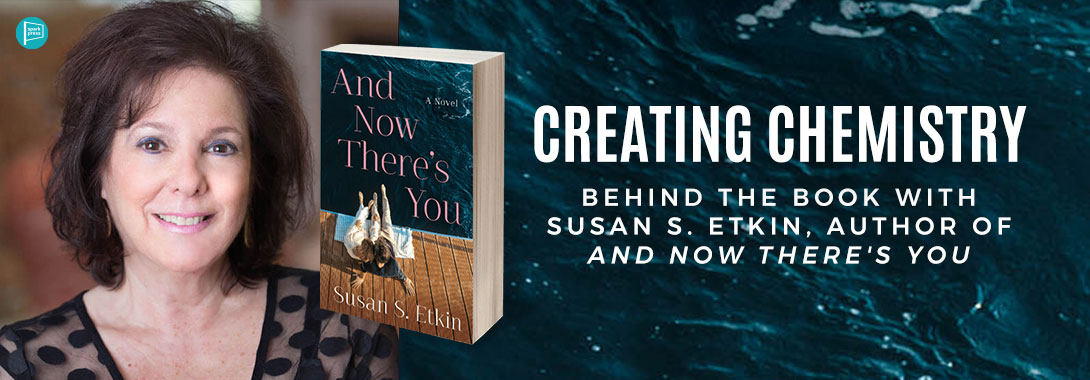
The element of romance drew me in during high school, when I was introduced to such classics as Thomas Hardy’s Tess of the D’Urbervilles, Emily Bronte’s Wuthering Heights, Daphne De Maurier’s Rebecca, and Charlotte Bronte’s Jane Eyre. I loved these books and still do. I remain forever intrigued by stories that include a powerful romantic relationship, even if a happily ever after—certainly my preference—does not result.
What makes for a powerful attraction between two people?
In a novel, I believe it’s an ineluctable chemistry the characters share thanks to the author’s creativity, and I suspect many other readers of fiction feel the same. I don’t mind if the characters deny that the chemistry exists, attempting to ward it off at every turn. As a reader, I’m there enjoying every word of the dialogue, every secret thought, and every description of physical attributes or observable behaviors the narration delivers. So when writing my debut novel, And Now There’s You, a romance involving attractive, mature lovers, I wanted the chemistry between them to leap off the pages and compel readers to keep turning them.
What is chemistry anyway?
Primarily and most importantly, I believe it’s one character’s perception of another’s attributes that he or she finds desirable, admirable, and sexually arousing. What’s involved is a compilation of many things—an interplay of personalities, physical attractiveness, and deep connections possibly involving careers, talents, interests, cultures, conversations, and the like. This assemblage, a unique phenomenon, gives rise to emotions, to feelings, that given enough time and multiple opportunities, may lead to a romantic relationship with staying power—a true attachment.
When my protagonist, Leila Brandt, an interior designer, meets architect Ayden Doyle at the home of a mutual client, my description of him attempts at first to minimize his appeal but then…
At first glance, Ayden didn’t present an overwhelmingly impressive appearance; he was a man of average height, maybe five foot nine or ten, and somewhere in his early fifties. Nevertheless, something about him captured Leila’s attention and caused a fluttering sensation deep in her chest. His still-dark auburn hair, though sprinkled with touches of gray, had some curls, giving him a youthful air. His toned body wore his blue jeans and gray T-shirt well—something he probably knew.
There’s that chemistry at work.
But how does dialogue alert the reader to the presence of chemistry?
Likely playful banter between the characters exists . . .
He reached across the table and took her hand. “You know, your sense of humor is almost as good as mine.”
“Well, another perspective would be that mine is equal to yours.”
“Perhaps.” He gave her hand a slight squeeze.
How exciting it is when the author reveals the protagonist’s secret thoughts, providing readers with the opportunity to understand the nature and extent of emotions brewing underneath the surface, often contrary to the protagonist’s overt behaviors and missed by his or her love interest?
As before, his movements were precise and skillful. Why did she take notice of this? She wasn’t sure, but she continued to study Ayden as he pulled out large illustrations from a portfolio already placed on the table. He was nicely built. His gray T-shirt, with the logo AD and Associates scrolled in navy blue above the pocket, showed off his trim, muscular frame. His hair was exceptionally curly today, making him appear more boyish than he had at the Perkinses’. And those eyes of his were an intriguing sky-blue that Leila found almost hypnotizing.
I must be attracted to this man. If I weren’t, I wouldn’t be thinking like this. Leila set her jaw. I need to stay focused on my design mission.
I see the chemistry that the author creates between potential lovers as driving the romantic plot, especially when neither character is looking for a long-term relationship. The author devises a serendipitous moment or circumstance that brings two people together and the phenomenon of chemistry is unleashed. Even more interesting is that in spite of the threats to the relationship that may unfold, the shared chemistry is what enables the characters to deal with those challenges—or in the not-so-happy, ever-after endings, at least enjoy the romance while it lasts.

Leave A Comment